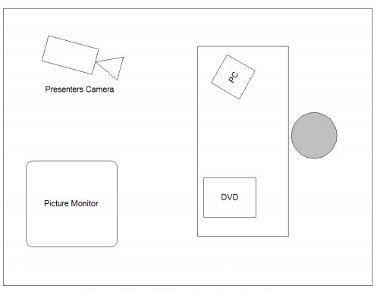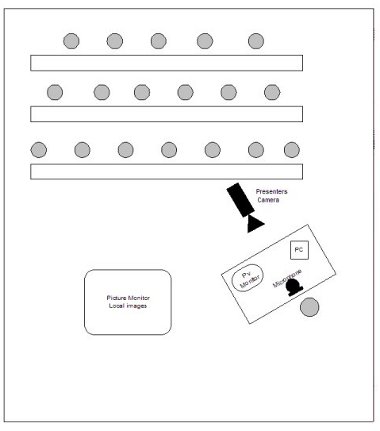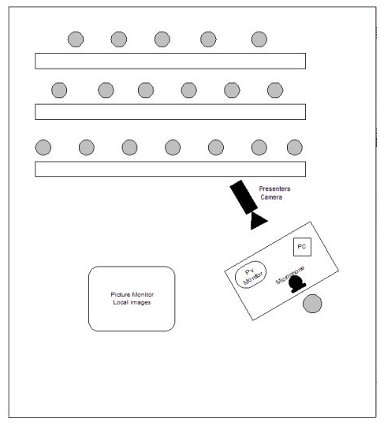What is videoconferencing used for?
- Meetings: this is probably the most popular application. The cost savings can be appreciable especially for international conferences where not only the travel costs are saved but also the significant time spent travelling to destinations. A company with branches in Europe, the United States and the Far East can use videoconferencing to effectively communicate and run its business. Geographical distance is no longer a barrier. This “travel replacement”, though, can sometimes act as a disincentive for some people to videoconference, as despite the real costs and inconvenience of travel many actually enjoy the experience especially when they are able to cover the cost with expenses.
- Teaching: videoconferencing can open up new dimensions to teaching. With videoconferencing, the teacher no longer has to be in the same room as the students. A national or even an international subject specialist can be linked to any number of sites in the United Kingdom or even the world. The lack of a local expert need not prevent students following a particular course. Several sites may also collaborate to present a subject more comprehensively. For example, Monkseaton High School in North Tyneside regularly shares language teaching with other schools; they also conference with a local school as a member of the “Partner Scheme” to assist students who have physical and or communication difficulties.
The ability to introduce illustrative material either as still images or moving sequences to both the local and remote audiences enhances the presentation.
Videoconference sessions can take many forms including:
1. There is a now a range of software which facilitates one-to-one conferencing from PC desktops. The quality and available features vary widely.
2. A teacher by him or herself teaching remotely to a group of students.
3. A teacher in a classroom teaching his own and students in another school.
4. A teacher with both local and remote students but with the added dimension of full interaction from both student groups.
In the second scenario, the teacher can conference from any convenient room suitably equipped, even an office (see Figure 1). They can select appropriate sources for their lesson i.e. camera, Whiteboard, PC, DVD player etc. as appropriate. The remote site will be able to interact and interject in a similar same way that would occur during a normal lesson even though the teacher may be hundreds of miles away. The teacher’s main concern would be to transmit decent images and accompanying sound. A link person would coordinate the students and equipment at the remote site.
Figure 1: A Teacher Videoconferencing to a Remote Site
The third situation requires a different approach. If a local teaching session to a group of students is also simultaneously relayed by videoconferencing to a remote site then the room needs to be specially arranged. The teacher will now need to face the local students but also be seen clearly at the remote site. The room would require to be laid out in a similar way to Figure 2 below. The local students can view PC illustrations etc. on the local picture monitor.
Figure 2: Teaching Local Students and Relayed to a Remote Classroom
The teacher will also need to view their own image together with any illustrations that they are using while facing the local audience. These illustrations may originate from a PC, a DVD player or from a Whiteboard now in common usage throughout schools. A small television monitor termed a preview monitor is shown on the desk in Figure 2 and is used to view any of these local images prior and during transmission to the remote site. As the lesson is simply being relayed to the remote site, interaction is not expected so remote site pictures and sounds are not relevant.
Finally, where teaching is being conducted both locally and remotely and full interaction is needed, we have a more complex situation. Pictures and sound are now required from the remote site. The local students and the teacher will need to see and hear the remote students. A second television display facing the students will normally be provided but the teacher also requires a second television preview monitor on their desk facing them in order to view the remote students (see Figure 3).
Figure 3: Teaching both Local Students and Remote Students with Full Interaction
Television picture monitors have been illustrated above, but in many cases data or large screen projectors will be better for the student displays as the images can be much larger than those produced by television monitors and still be acceptably bright under ambient lighting levels. However, care has to be taken with some data projectors as the noise from their cooling fans can be quite intrusive.
In higher education, large scale teaching over videoconferencing is carried out to overcome geographical problems. The Welsh Video Network links most Universities and Colleges in Wales. In Scotland, the remote Highland and Island areas have been linked together to create The University of the Highlands and Islands so that students may link with partner institutions for collaborative teaching.
- Management: colleges with split campuses need to communicate regularly and efficiently, and videoconferencing is seen as a cost-effective solution. A good example is the Open University who conference between sites and also link remote sites to their regional centres.
- Remote Diagnosis: where specialist medical resources are scarce e.g. in a rural area, cottage hospitals and GP surgeries can be linked to the regional teaching hospital. Patients can then receive rapid specialist diagnosis.
- Interviews: this use is growing in popularity. It is found by many users to be just as effective as face-to-face interviews, particularly when data sharing is used to compare CVs etc. For international interviews, videoconferencing could include candidates that previously would have been excluded purely on grounds of cost. This is particularly relevant for local authorities.
Some interviewers, however, regard the conference experience as quite inferior when compared to a face-to-face meeting and complain that the medium lacks spontaneity, and that nuances of body language are lost.
Other interviewers use videoconferencing as a first stage filter in the selection process. They are thus able to view many more potential candidates due to the cost savings, especially where these applicants are based overseas.
- Legal Work: the nature of many legal cases can involve communication between parties in different locations, even different continents. Videoconferencing helps to reduce costs. It is also being used for live in-court sessions. In particular, sensitive cases e.g. those involving child abuse, intimidation and rape, videoconferencing can make the experience far less traumatic for the victims.









Comments
Video Conferencing helps people to collaborate with each other instantly, share ideas and documents, conducting meetings, giving online presentations etc. which saves both, time and money. There are various desktop video conferencing services such as R-HUB web conferencing servers, WebEx, gomeetnow, gotomeeting etc. to select from.